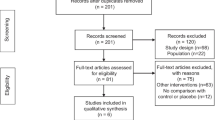Abstract
Background
Acute carpal tunnel syndrome (CTS) is a complication that can develop after distal radius fractures. Our hypothesis tested whether patient-reported outcomes after acute carpal tunnel release (CTR) performed in combination with distal radius fracture open reduction internal fixation (ORIF) are worse than patient-reported outcomes with only elective CTR as measured by the symptom severity and functional status scales of the Boston carpal tunnel questionnaire (BCTQ).
Methods
A retrospective assessment identified 26 patients treated with acute CTR at the same time as distal radius ORIF, no history of pre-existing CTS or CTR, no other injuries, and >12 months follow-up. Sixteen of these patients (Group A) could be contacted and answered the BCTQ. Group A was age- and sex-matched to control patients (Group B) treated with only elective CTR. A case–control study was performed comparing outcomes of both groups.
Results
The average age of patients was 51 ± 15 years, with an average follow-up of Group A at 49 ± 21 months versus Group B at 55 ± 20 months. The mean symptom severity scale score for Group A was 1.4 ± 0.4 and for Group B was 1.4 ± 0.4. The mean functional status scale score for Group A was 1.4 ± 0.5 and for Group B was 1.3 ± 0.4. The mean total BCTQ score for Group A was 26.5 ± 7.5 and for Group B was 24.9 ± 7.5. There were no statistical or clinically significant differences between Group A and Group B for symptom severity, functional status, and total BCTQ scores.
Conclusions
Patients with acute CTR performed at the same time with distal radius ORIF do as well in the long-term as those patients with only elective CTR as measured by the BCTQ. Patients should expect similar recovery of subjective nerve function from acute median nerve dysfunction when CTR is performed with distal radius ORIF as patients with only elective CTR.
Similar content being viewed by others
References
Abbott LC, Saunders JB. Injuries of the median nerve in fractures of the lower end of the radius. Surg Gynecol Obstet. 1933;57:507–16.
Amirfeyz R, Pentlow A, Foote J, et al. Assessing the clinical significance of change scores following carpal tunnel surgery. Int Orthop. 2009;33(1):181–5.
Atroshi I, Johnsson R, Sprinchorn A. Self-administered outcome instrument in carpal tunnel syndrome. Reliability, validity and responsiveness evaluated in 102 patients. Acta Orthop Scand. 1998;69:82–8.
Bauman TD, Gelberman RH, Mubarak SJ, et al. The acute carpal tunnel syndrome. Clin Orthop Relat Res. 1981;156:151–6.
Bienek T, Kusz D, Cielinski L. Peripheral nerve compression neuropathy after fractures of the distal radius. J Hand Surg Br. 2006;31B:256–60.
Dyer G, Lozano-Calderon S, Gannon C, et al. Predictors of acute carpal tunnel syndrome associated with fracture of the distal radius. J Hand Surg Am. 2008;33A:1309–13.
Fuller DA, Barrett M, Marburger RK, et al. Carpal canal pressures after volar plating of distal radius fractures. J Hand Surg Br. 2006;31B:236–9.
Gelberman RH, Szabo RM, Mortenson WW. Carpal tunnel pressures and wrist position in patients with Colles’ fracture. J Trauma. 1984;24:747–9.
Henry M, Stutz C. A prospective plan to minimize median nerve related complications associated with operatively treated distal radius fractures. Hand Surg. 2007;12:199–204.
Leite JC, Jerosh-Herold C, Song F. A systematic review of the psychometric properties of the Boston carpal tunnel questionnaire. BMC Musculoskelet Disord. 2006;7:78.
Levine D, Simmons BP, Koris MJ, et al. A self-administered questionnaire for assessment of severity of symptoms and functional status in carpal tunnel syndrome. J Bone Jt Surg. 1993;75A:1585–92.
Mack GR, McPherson SA, Lutz RB. Acute median neuropathy after wrist trauma: the role of emergent carpal tunnel release. Clin Orthop Relat Res. 1994;300:141–6.
Odumala O, Ayekoloye C, Packer G. Prophylactic carpal tunnel decompression during buttress plating of the distal radius—is it justified. Injury. 2001;32:577–9.
Ozyurekoglu T, McCabe SJ, Goldsmith LF, et al. The minimal clinically important difference of the carpal tunnel syndrome symptom severity scale. J Hand Surg Am. 2006;31A(5):733–8.
Paley D, McMurty RY. Median nerve compression by volarly displaced fragments of the distal radius. Clin Orthop Relat Res. 1987;215:139–47.
Sambandam SN, Priyanka P, Gul A, et al. Critical analysis of outcome measures used in the assessment of carpal tunnel syndrome. Int Orthop. 2008;32:497–504.
Schnetzler KA. Acute carpal tunnel syndrome. J Am Acad Orthop Surg. 2008;16:276–82.
Szabo RM. Acute carpal tunnel syndrome. Hand Clin. 1998;14:419–29.
Szabo RM, Gelberman RH, Williamson RV, Hargens AR. Effects of increased systemic blood pressure on the tissue fluid pressure threshold of peripheral nerve. J Orthop Res. 1983;1:172–8.
Zoubos AB, Babis GC, Korres DS, et al. Surgical treatment of 35 volar Barton fractures. No need for routine decompression of the median nerve. Acta Orthop Scand. 1997;275S:65–8.
Conflicts of Interest
The authors of this manuscript have no conflicts of interest, commercial associations, or intent of financial gain regarding this research to declare.
Author information
Authors and Affiliations
Corresponding author
About this article
Cite this article
Chauhan, A., Bowlin, T.C., Mih, A.D. et al. Patient-reported outcomes after acute carpal tunnel release in patients with distal radius open reduction internal fixation. HAND 7, 147–150 (2012). https://doi.org/10.1007/s11552-012-9400-x
Published:
Issue Date:
DOI: https://doi.org/10.1007/s11552-012-9400-x




